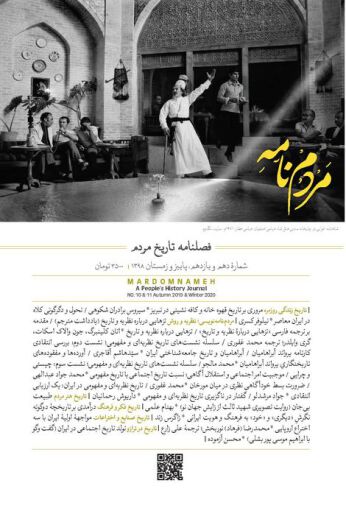
Back Issues
From Back Issues
(All translated from Persian)
Isfahan's Chahar Bagh in the Pahlavi Era
The History of the Present
Mohammad Alavikia - MA in Iranian History
Poor Migrants in 1913 Kermanshah
Abdolmehdi Rajaei - BA in Persian Literature
Arash Heidari - PhD in Cultural Sociology
Issue 24&25
In 1913, Kermanshah experienced a mass migration of poor and homeless people who had reached the city from the outskirts, enduring torment, hardship and suffering along the way. These were often pilgrims and traders who lived a respectful life in their cities before setting out to Mesopotamia for trade and business and being attacked by trade route bandits on their way back to their homelands.
Understanding social phenomena in modern Iran has often been plagued by ambiguity and phrases such as "the situation is complicated", "Iran's conditions cannot be explained by theories", "it is anomic and incomprehensible"; etc. But the science should aim to explain the nature of phenomena as relegation to incomprehensibiblity further adds to complexity and inaccessibility.
Chahar Bagh is a geographical, economic and social axis of Isfahan. This street was constructed 400 years ago and during the time of Shah Abbas I and it has maintained the significant status envisioned by its founders up to this day. Unlike some other historical streets that have lost their glory, Chahar Bagh has not been sidelined in urban development plans and is still considered the backbone of Isfahan city.
Helmand River - Photo by Karla Marshall - Wikipedia
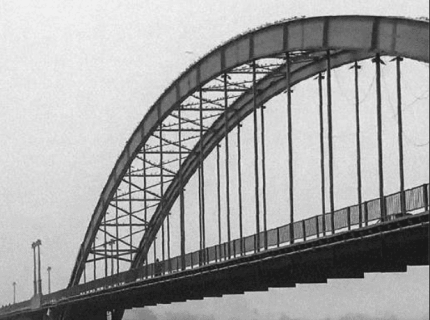
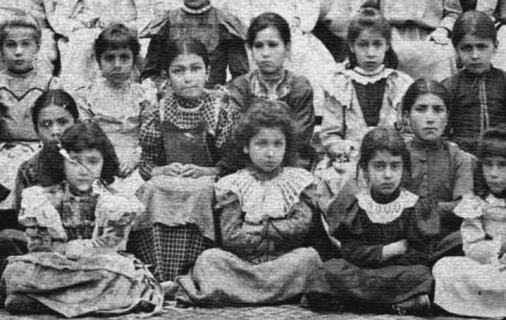



Iranian Gardens
Female Travelers in Achaemenid Era
Amin Babadi - Masters in the History of Ancient Iran
Social Welfar in Sassanid Era
Mohammadreza Mehdizadeh - PhD in Sociology
Fatemeh Kameli - BA in History

Scholars divide the history of social welfare into three stages. Stage one was the tribal and village life, where needs were supported within families and village communities. Stage two was the establishment of religious and charitable institutions to support the poor. In stage 3, governments became responsible for social welfare. I believe that social welfare in the Sassanid society was in stage 3 where the government executed welfare policies.
There are limitations to our historical records on people's history and topics such as travel history. Thus, reconstructing the history of daily life in ancient Iran is a complex process. Moreover, the passage of time has removed traces of many material objects of daily life. However, the tablets of Takht-e Jamshid depicts the scenes of people's daily life cannot be found in other resources of Achaemenid history.
The Dushan Tappe garden was an important royal hunting ground in the Nasseri era. It also had a special gateway to Tehran and remained prosperous until the Pahlavi era. Nasser al-din Shah refers to this garden in his memoirs, traces of which still remain in the Firuzeh Palace. A rare practice in the paintings of the Nasseri and Qajar period, was the depiction of women at the end corner of the frame, reflecting their social status in the era.
Isfahan's Chahar Bagh in the Pahlavi Era
The History of the Present
Mohammad Alavikia - MA in Iranian History
Poor Migrants in 1913 Kermanshah
Abdolmehdi Rajaei - BA in Persian Literature
Arash Heidari - PhD in Cultural Sociology
Issue 21-23
In 1913, Kermanshah experienced a mass migration of poor and homeless people who had reached the city from the outskirts, enduring torment, hardship and suffering along the way. These were often pilgrims and traders who lived a respectful life in their cities before setting out to Mesopotamia for trade and business and being attacked by trade route bandits on their way back to their homelands.
Understanding social phenomena in modern Iran has often been plagued by ambiguity and phrases such as "the situation is complicated", "Iran's conditions cannot be explained by theories", "it is anomic and incomprehensible"; etc. But the science should aim to explain the nature of phenomena as relegation to incomprehensibiblity further adds to complexity and inaccessibility.
Chahar Bagh is a geographical, economic and social axis of Isfahan. This street was constructed 400 years ago and during the time of Shah Abbas I and it has maintained the significant status envisioned by its founders up to this day. Unlike some other historical streets that have lost their glory, Chahar Bagh has not been sidelined in urban development plans and is still considered the backbone of Isfahan city.
Helmand River - Photo by Karla Marshall - Wikipedia

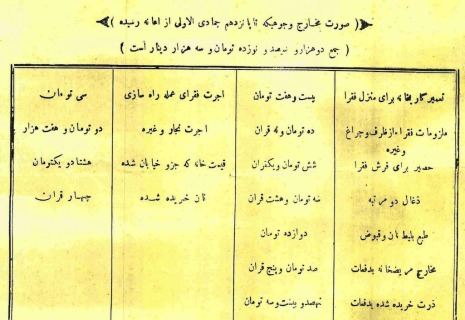


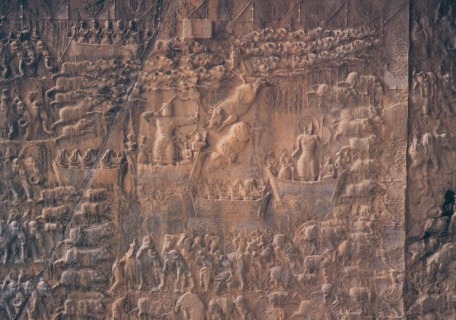
Iranian Gardens
Female Travelers in Achaemenid Era
Amin Babadi - Masters in the History of Ancient Iran
Social Welfar in Sassanid Era
Mohammadreza Mehdizadeh - PhD in Sociology
Fatemeh Kameli - BA in History

Scholars divide the history of social welfare into three stages. Stage one was the tribal and village life, where needs were supported within families and village communities. Stage two was the establishment of religious and charitable institutions to support the poor. In stage 3, governments became responsible for social welfare. I believe that social welfare in the Sassanid society was in stage 3 where the government executed welfare policies.
There are limitations to our historical records on people's history and topics such as travel history. Thus, reconstructing the history of daily life in ancient Iran is a complex process. Moreover, the passage of time has removed traces of many material objects of daily life. However, the tablets of Takht-e Jamshid depicts the scenes of people's daily life cannot be found in other resources of Achaemenid history.
The Dushan Tappe garden was an important royal hunting ground in the Nasseri era. It also had a special gateway to Tehran and remained prosperous until the Pahlavi era. Nasser al-din Shah refers to this garden in his memoirs, traces of which still remain in the Firuzeh Palace. A rare practice in the paintings of the Nasseri and Qajar period, was the depiction of women at the end corner of the frame, reflecting their social status in the era.
Helmand river in Iran-Afghanistan relations
Water Conflicts in Iranian History
Hassan Zolfaghari- Tarbiat Modarres University
Water Conflicts in People's Culture
Fazollah Boraghi - PhD in Iranian History
Mehdi Mirzaei- PhD in Iranian History
Issue 20
Due to water mismanagement and recurring droughts in recent decades, water scarcity has reached dangerous levels across Iran. In addressing this crisis, implementing water resource management plans is key. However, it is also important to change practices and train society on sustainable water usage. History, alongside other fields of knowledge, can contribute to this significant objective.
Water disputes were common among farmers throughout Iranian history. Conflicts intensified during summer water shortages. Interferences by officials with self-serving agendas only added to the tension. Water disputes were predominantly prevelant in dry areas such as Yazd, Qom and the south of Khorasan. The post-constitutional parliament became one of the institutions where disputes were processed.
The roots of the Helmand/Hirmand River dispute between Iran and Afghanistan lie in British demarcation and mapping policies in Iran-Afghan borders in the late 1800s. The water dispute has been a major source of conflict between the two countries and remains unresolved. Initial attempts at reconciliation in 1973 were sidelined by political climates in both countries in the late 1970s and subsequent wars that followed.
Helmand River - Photo by Karla Marshall - Wikipedia





Gramaphones in Reza Shah Era
The Crisis of Wage Earners
Maryam Ebrahimi - Master's in Architectural Studies
Safaeieh Garden in Rey
Pouya Nekouei - PhD Student, University of Texas at Austin
Amin Mohammadi - PhD in Iranian History

From the Safavid era onwards, the city of Rey, where the shrine of Shah Abdol Azim’s was situated, gained religious prominence. In the Qajar era, it was the leading religious centre of Tehran, with a significant influence over political affairs, such as the 1905 constitutional revolution where the revolutionaries twice took sanctuary in its grounds. Thus, the Safaeieh Garden in Rey became a place of intellctual gatherings to exchange new ideas.
The number of wage earners was notable in the Qajar era. Records document a wide range of people who were regular recepients of salaries from the government. Princes, courtiers, writers, ulema, Prophet descendants and the khans and khanates were among the most important groups of earners. Since wages were transferred to the earners' heirs after death, the number of earners increased in the long run and created a serious crisis for the government.
Gramophone companies began operations in Iran in the Reza Shah era, shortly after the end of the Qajar dynasty. The Pate Company, founded in Iran in 1927, recorded 102 audio tracks of Iranian artists and musicians, including invaluable pieces by female artists of the time. The recordings represent one of the most prominent periods in the history of sound in contemporary Iran by perserving some of the finest music pieces of the era.
People, a Modern Concept
History of Listening in Contemporary Iran
Maghsood ali Sadeghi - Tarbiat Modarres University
Water Scarcity in History
Nina Maziyar - MA in History
Pouya Nekouei - PhD Candidate, University of Texas, Austin
Issue 18&19
Due to water mismanagement and recurring droughts in recent decades, water scarcity has reached dangerous levels across Iran. In addressing this crisis, implementing water resource management plans is key. However, it is also important to change practices and train society on sustainable water usage. History, alongside other fields of knowledge, can contribute to this significant objective.
History of listening is a sub-discipline of the history of emotions. In post-constitutional Iran, there was a transformation in the social perception of music as a modern public phenomenon. Thus, music was discussed in daily newspapers and melodies could be heard from theatre halls, concert halls, cafes and gramophones. Therefore, public spaces played a key role in this social transfromation.
People is a modern concept. Its present implication differs from its past perceptions. In pre-modern history, the masses were regarded as subjects who were largely excluded from political decision-making.This does not imply a lack of public activism in pre-modern times. It rather indicates that what separates modern people from their historical peers is primarily a conceptual distinction.
Photo: Janine Weidel





Prostitution and Social Reform
Holy Trees, Healers & Mourning Customs
Abdolmehdi Rajaei- PhD. in History
The Dustmen of Isfahan
Elham Azhari - MA in Social Communication
Nasim Khalili - PhD in History

In 1932, Akhgar Newspaper reported that there were a total of 240 dustmen in Isfahan, with the municipality planning to fire 40 of them. They were not all responsible for collecting garbage. Many were assigned to sweep the streets. 10 years later and with a change of policy, the new mayor of Isfahan was looking to hire 50 more dustmen to improve the quality of street cleaning and sweeping.
Sadeq Hedayat’s writings on popular culture are pioneering literary sources in studies on people’s history. His monographs present a wealth of information on the culture, beliefs and daily lives of everyday people. Many of his writings have roots in oral literature with specific reflections on cultural taboos, a field that Hedyat addressed frequently and indirectly as a researcher and a writer.
The destruction of walls surrounding Tehran as part of urban development, changed the city borders. Quarters outside of the city such as Shahr-e no where prostitutes gathered, were now visible to the public. Also, STDs such as syphilis and gonorrhoea had reached critical levels across Tehran. Doctors took preventive measures by distributing medical booklets in pharmacies and hospitals.
Source: Unknown
Old Bath Houses in Reza Shah Era
(Case study of Isfahan)
Qanats and People's History
(An overview)
Morteza Daneshyar, Issue 16&17
Villages in Modern Iranian History
(Case study of Torosk)
Abdolmehdi Rajaei, Issue 16&17
Leila Tabatabaei, Issue 16&17
Issue 16&17
Three main sectors of Torosk’s economy were livestock farming, self-sustaining agriculture, and carpet weaving. WWI brought big changes to Torosk. On the one hand, it restricted access to Russia’s big market follwing the 1917 Russia Revolution and the founding of the Soviet Union. It also led to mass unemployment, resulting in population displacement.
Perhaps one reason that this architectural heritage has been neglected in historical studies is its lack of connection to institutions of power. Qanats, water storage houses and underground villages were mainly built by everyday people. They were used in everyday life and they were crucial to people's survival. This article aims to address some of these gaps.
In the Reza Shah era, plumbing technology reached Iran. Public bath owners had the option to replace clay pipes with internal plumbing and showers. Yet, there were cultural and economic barriers. Muslims approved of ghusl (washing) in bath water but were not keen on imported showers due to unclear religious codes and lack of economic incentives.
Photo: Ruhollah Vahdati - ISNA



Photo: Torosk Instagram Page
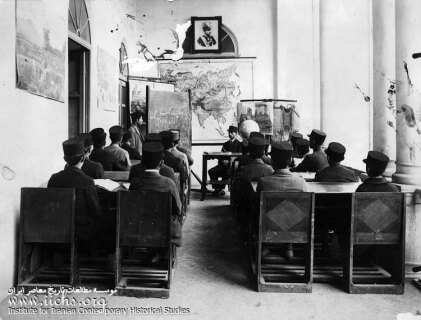

Water in Popular Culture
(Case study of Meimand)
Discipline and Hygiene in Modern
Education (Case study of Kermanshah)
Farhad Dashtakinia, Issue 16&17
History of Mentalities in Saedi's Monographs
Majid L. Khaniki, Issue 16&17
Mohammadali Alavikia, Issue 16&17

Saedi was a psychiatrist. He studied at the University of Tabriz and wrote his thesis on the impact of social factors on psychological crises. This background influenced him in approaching his monographies from the perspective of his profession. His writings revealed dark and obscure features of the psyche through his characters while also reflecting on the roots of popular beliefs.
An important practice in modern schools was the education officials' supervision over the education process. They concentration was on education, hygiene, and disciplinary measures. Principals were obliged to oversee hygiene protocols when admitting new students. Pupils were required to present doctor notes, certifying they did not have diseases such as eczema, impetigo and granulomatous.
Meimand village is in Kerman province. One of its most important indigenous technologies is the qanat water system, a historically crucial source of irrigation for agricultural lands and satellite gardens. Qanats in Meimand are notable for their spatial structure, positioned consecutively and connected through hydraulic underground channels, resulting in maximum use of water resources.
Gholman hossein Saedi
Photo: Meimand Village - tarikhema.org
Photo: Inst of Iranian Contemporary HIstorical Studies


Hosseinieh Ershad & History
Shahr-e no (From Construction to Demolition)
Mohammad J. Abdollahi, Issue 12-15
Social Housing in 1960s Tehran
Saba Madani, Issue 12-15
Elham Azhari, Issue 12-15

The relocation of the poor from the city centre to the 9th of Aban district in the south of Tehran improved their living conditions but deteriorated their income opportunities. In previous locations, they lived closer to more affluent parts of the city which provided them with job opportunities such as domestic service, laundry service, car-washing, ticket selling, etc.
After the 1979 revolution, there has been less talk of Tehran's Shahr-e no (red-light district) but it is still possible to find people with past associations to the district. More than fourty years after the demolition of Shahr-e no, I spoke to one of the women who worked there. Moones, now aged 60, worked in the district with her mother from the age of 13.
Hosseinieh Ershad holds the history of a collective vision and a sense of determination in building an influential and popular medium for intellectual exchange. New and tolerant approaches defined the eventual success of its visionaries, most notably building, within the religious construction, a fully equipped meeting hall where the stage replaced the pulpit.
Ayadegan Newspaper, March 3rd,1979
Source: Eugene Aftandilianz
Photo: Khadijeh Kiakajouri
Issue 12-15

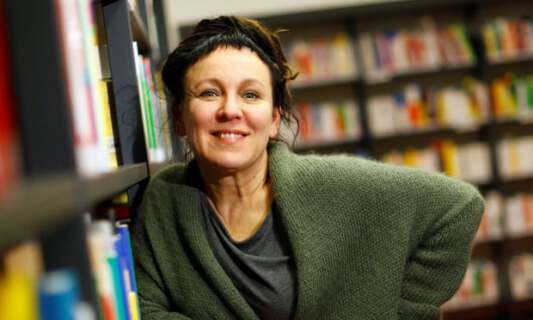
Public History of Architecture
Modern Leisure (A View from Rasht)
Dorota Aslapa, Issue 12-15
A Writer Beyond Fixed Realities
Samaneh Mohseni, Issue 12-15
Zohreh Tohidi, Issue 12-15
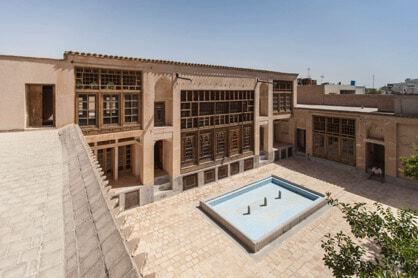
Olga Tokarczuk (born in 1962) is a Polish writer and the recipient of the 2018 Nobel Prize in literature. Her writings address issues such as identity crises, the passage of time, the finite nature of life, the ethnic and religious minorities of Poland and their way of life, women's rights, animal rights and the overall narratives and stories of people that are less heard.
From the 1900s and with the construction of the first modern street in Rasht (Pahlavi Street, now Imam Khomeini Street), leisure moved from nature to the city. With no electricity in most parts of Rasht, the streetlights and the various shops and window displays added to the attraction and fascination, making leisure a more accessible feature of daily city life.
What is the nature of people's interest in the history of architecture? In my view, the general public prefer to move beyond the physical structure and discover the stories behind them. Devising factual and engaging narratives that inspire empathy and appreciation for historical constructions is essential in building a public history of architecture.
Photo: Thilo Schmulgen/Reuters
Photo: Farsheed Nasrabadi


People's History of Architecture
History and Literary Criticism
(Afsaneh Najmabadi, Issue 4&5)
Photo Narratives
(Mehrdad Qayoomi, Issue 6&7)
(Hossein Payandeh, Issue 1)

In Sherry Turkle's words, photos and family photos are "evocative objects underscoring the inseparability of thought and feeling in our relationship to things. We think with the objects we love; we love the objects we think with." Family photos that come to life through family recollections are significant sources in family historiography.
The distinguishing feature of people’s history of architecture is not a just a matter of subject or methodology but a matter of perspective. From a broader viewpoint, an architectural site represents not just the final construction but a process of people as forces of construction. In people's history of architecture, the traces and faces of such forces are explored.
Differentiating between writings on the history of literature on the one hand and historical fiction on the other is a complex task which brings us back to a central epistemological debate : To what extent can literature be a medium of historical reflection? What is the significance or influence of historical knowledge in understanding works of literature?


Omitted Voices in Satirical Media
History of Theft in Qajar Iran
(Lotfollah Kargari Aryan & Morteza Afshar, Issue 8&9)
People's History in Tanavoli's Work
(Farhad Dashtakinia, Issue 2&3)
(Hossein Bayatloo, Issue 4&5)

Lion is a recurring pattern in Tanavoli's work, depicted both individually and next to the sun in sculptures, rugs and paintings. The oil paitining of a lion pictured above is a compilation of different rectangles, resembling Bakhtiari stone lions. The half circle sun behind the lion embodies a cedar tree which is one of the oldest design patterns in Iranian history.
Robberies were planned in different ways. Thieves adopted new methods of stealing after previous methods were exposed to the public. In urban areas, robberies occurred predominantly in shops where access to cash or commodities was presumed. Stealing tactics from shops varied depending on the shop location, time of day and crowd numbers.
The groundwork for the publication of satirical periodicals in Iran was laid by the constitutional revolution in 1906. In five months, the Azarbaijan Periodical was published with the backing of figures such as Sattar Khan. The periodical was modelled after the famous Molla Nasredin periodical (1906-1931) that was printed in Tiflis (Tbilisi) at the time.







